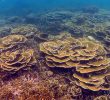TAGUM CITY — Educating the public on aerial spraying turned up as the preferred step to be taken among various stakeholders of the banana industry who attended the recently held seminar on Science-Based Agriculture for Farm Enhancement (Safe) in Tagum City, Davao del Norte.
The stakeholder prefer an education campaign because they claimed that they would be losing much from the industry they have been depending on for about 40 years if aerial spraying would be totally banned.
Organized and sponsored by pesticides company CropLife Philippines and the Initiative for Farm Advocacy and Resource Management (iFarm), the seminar drew more than 100 participants who were students, farmers, banana growers, officials of local and regional agriculture offices,
Topics tackled during the seminar included advocating Safe, agri-chemical for sustainable agriculture, Fertilizer and Pesticides Authority (FPA) regulation on pesticides for its safety and efficacy, and empowering stakeholders through advocacy and social mobilization.
Faustino S. Salting, chair of Davao del Norte Provincial Agriculture and Fisheries Council (PAFC) pointed out the need to educate the public regarding the lesser known facts of aerial spraying.
“It’s a matter of educating the people,” he said.
Joining the open forum, Municipal Councilor Reynaldo Panesal Jr of Asuncion, Davao del Norte agreed on the need to educate the public of aerial spraying but he suggested measures to spare vulnerable sectors from getting contaminated of fungicide mists.
In an interview, Panesal said he might not be for banning aerial spraying but he said doing such should adhere with the proper guidelines and procedures and should be done within the limits of the buffer zone.
Panesal revealed that he used to work with a banana plantation and that he too had drawn benefits, in one way from the industry which has been struggling to fight segatoka, a fungus that attacks banana leaves.
Panesal who chairs the Committee on Agriculture of the Sangguniang Bayan of Asuncion said that the mounting resistance against aerial spraying of fungicide to eliminate segatoka could be triggered by the expansion of areas planted to bananas.
“Naay duol sa eskwelahan, sa kabalayan; may nagsalig lang sa tubig sa ulan, mao na nga sila naga reklamo. (There are those near schools, communities while there are households which are dependent on rainwater. That’s why they are complaining),” he said referring to banana plantations near residential areas.
Affected residents usually lodge their complaints at offices of local government officials whom they expect to take actions.
Taking up the kind of complaints he had received, Panesal said his committee asked banana companies near school to do aerial spraying on Saturdays and Sundays when children are out of school.
Companies were also asked to donate artesian wells so residents dependent on rainwater would have other source of potable water.
His committee also asked companies of banana plantation near residential areas to do away with aerial spraying but instead use a power sprayer operated manually and see to it that mists won’t get to communities.
iFarm official Dr. Calixto Protacio meanwhile rallied public understanding on science-based agriculture which he said is actually good. However he admiitted that, if aerial spraying is affecting people which are not in the banana industry, we also have to consider them.
Also in the seminar, FPA deputy executive director Dr. Dario C. Sabularse said aerial spraying of fungicide to kill segatoka has been approved by FPA because it has been found to be the most effective means of countering the fast spread of airborne segatoka.
However, Sabularse said aerial spraying is not given a special consideration because of its significance to the banana industry and the Food and Agriculture Organization (FAO) has issued the guidelines for aerial spraying. (PIA XI)









